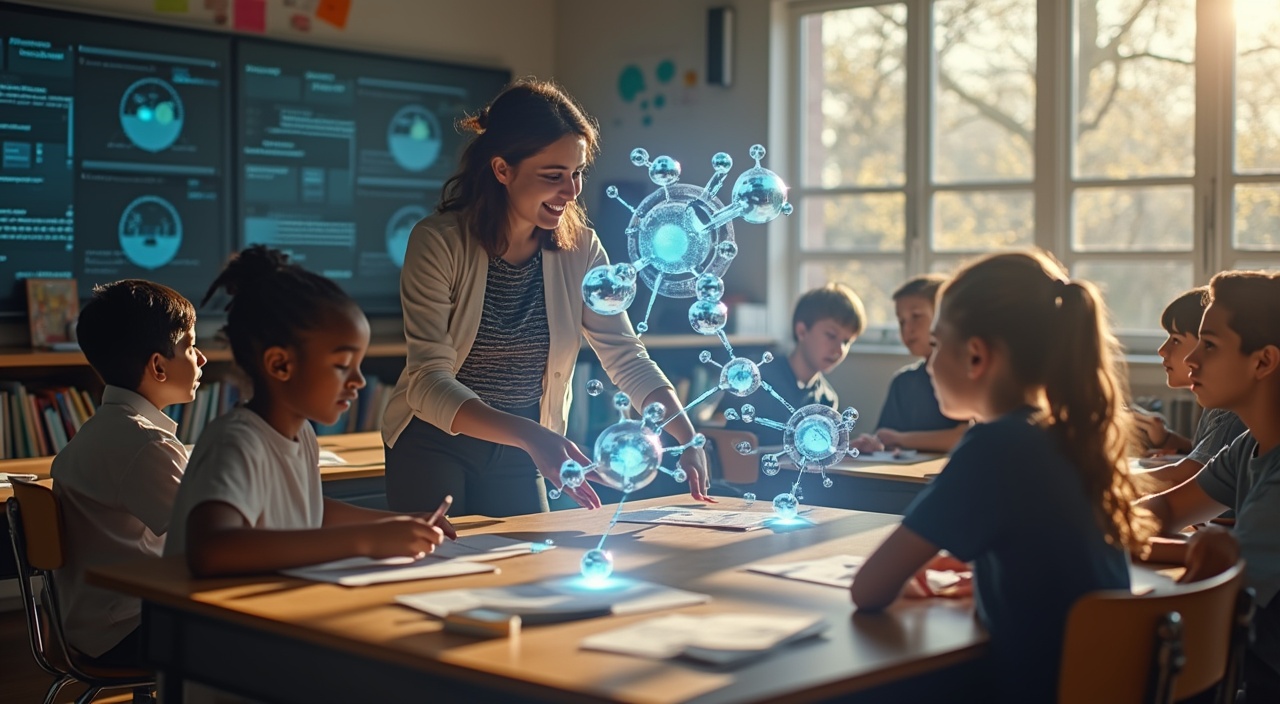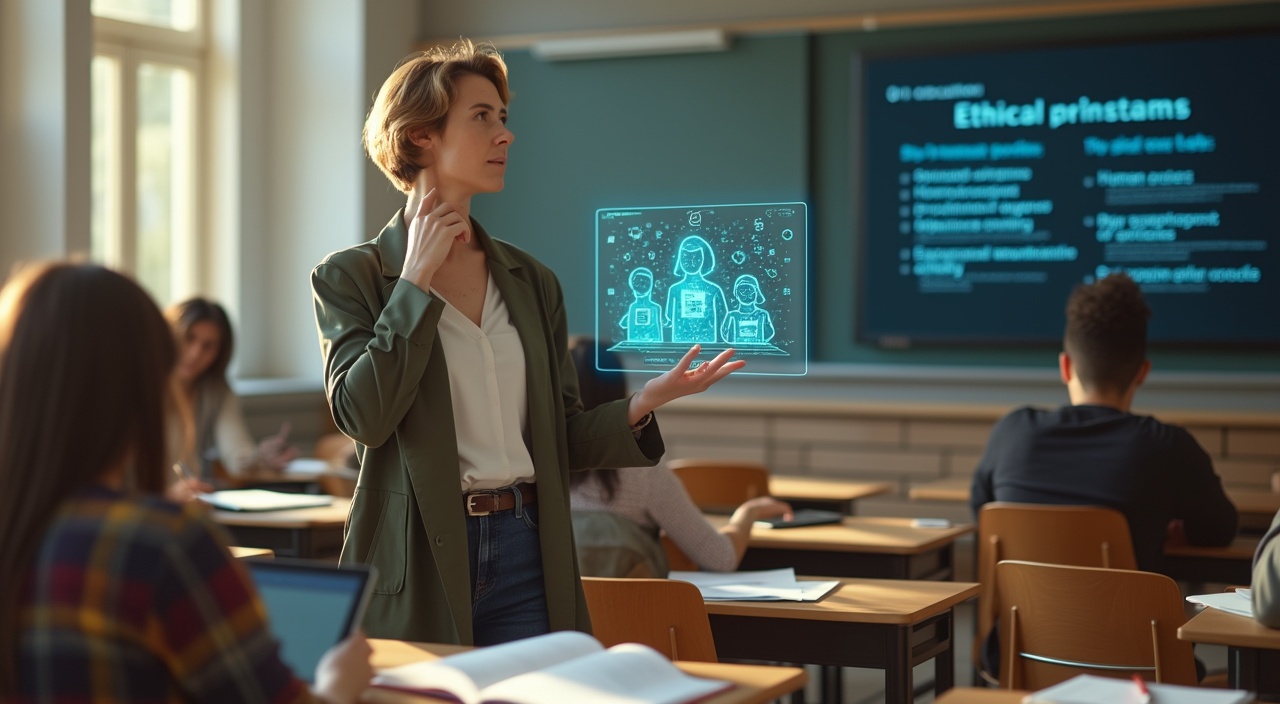The AI revolution has transformed classrooms, giving teachers powerful technological capabilities that personalize learning in ways previously impossible. Schools integrating these intelligent tools allow educators to become learning heroes, using AI to adapt lessons instantly and create tailored experiences for each student.
Key Takeaways:
- Over 70% of U.S. K-12 schools have piloted AI-powered classroom technology, yet only 5% of teachers have received comprehensive AI professional development
- AI tools enable real-time personalization, allowing simultaneous differentiated instruction for students with varying learning needs
- Teacher autonomy is critical – successful AI integration happens when educators control implementation rather than having solutions imposed
- Practical AI platforms like Tutor CoPilot, Brainly, and DreamBox are revolutionizing instructional strategies and student support
- Schools implementing AI-driven personalized learning report 15-20% improvements in reading and math scores after just one semester
I’ve seen firsthand how AI tools can transform education when properly implemented. Having worked with several small businesses in the education sector, I can tell you that the right approach makes all the difference. AI Agents Won’t Replace You—But They Might Change What It Means to Be You.
The data shows impressive potential, but successful implementation requires careful planning. The 15-20% improvements in reading and math scores don’t happen automatically – they result from thoughtful integration where teachers maintain control of the learning process.
Strange but true: most schools rush to adopt AI technology without properly training their educators. This gap between technology adoption and professional development creates frustration rather than progress.
Picture this: A classroom where teachers can instantly create different lesson versions for visual learners, auditory learners, and hands-on learners simultaneously. This isn’t science fiction – it’s happening right now in schools that properly leverage AI tools.
Here’s the twist: The most successful AI implementations don’t replace teachers – they free them from administrative burdens so they can focus on what truly matters: meaningful student interactions. This mirrors what I’ve observed in Transform Your Appointment-Based Business with AI: A Comprehensive Guide.
Let that sink in.
Teacher autonomy stands as the cornerstone of effective AI integration. When educators feel ownership over technology implementation, they become champions of innovation rather than resistant to change. I’ve coached many professionals through similar transitions, and the principle remains consistent across industries – people embrace tools they choose themselves.
The good news? Schools can start small with practical AI applications that solve immediate problems:
- Automated grading for objective assessments
- Content creation assistants for lesson materials
- Personalized practice exercises based on student performance
- Translation tools for multilingual classrooms
- Reading assistants for students with learning differences
But wait – there’s a catch: Without proper guidance, schools risk wasting resources on flashy tools that don’t address actual educational needs. According to a Stanford HAI report, successful AI implementation requires clear alignment with specific learning objectives.
My experience with technology integration projects has taught me that starting with the problem, not the solution, leads to better outcomes. The Power of Blogging in Professional Services Marketing demonstrates this principle in another context.
Practical Next Steps for Schools
Start with a clear assessment of current challenges. Which teaching or learning tasks consume disproportionate time with minimal educational value? These areas offer the best starting points for AI integration.
Involve teachers from day one. Their classroom insights will identify which tools actually solve real problems versus those that simply add technological complexity.
Focus on measuring meaningful outcomes. The goal isn’t using AI – it’s improving student learning. According to education experts, schools must develop clear metrics for assessing AI’s impact.
Invest in ongoing professional development. The 5% statistic regarding teacher training reveals a critical gap that prevents many schools from realizing AI’s full potential.
Here’s what I mean: The same technology that frustrates an untrained teacher can empower one who receives proper support. This mirrors principles I discuss in Walking the Fine Line: Marketing Your Expertise Ethically.
I remember working with a small private school that rushed to implement an AI-powered math platform without properly preparing teachers. Initial resistance nearly derailed the entire initiative. Once we stepped back and redesigned the implementation with teacher input and comprehensive training, the same technology produced remarkable results.
The future of education combines human connection with technological enhancement. The schools seeing 15-20% improvements understand this balance – they use AI to handle routine tasks while redirecting teacher energy toward meaningful student engagement.
As educational policy experts note, successful AI integration requires intentional planning and clear guidelines. Schools leading in this area develop comprehensive policies addressing both opportunities and ethical considerations.
Looking for further insights? My experiences helping organizations adapt to technological change may provide valuable perspective. What Joe Habscheid’s Clients Have to Say about Him.
The AI education revolution isn’t about replacing educators – it’s about amplifying their impact. The most successful implementations enhance the human elements of education while automating the mechanical ones. AI: Our Greatest Ally or Looming Nightmare?
The path forward requires balancing innovation with intentionality. Schools that thoughtfully integrate AI tools while preserving educational fundamentals will prepare students for a future where human and artificial intelligence work together.
The Current Landscape of AI in Education
Over 70% of U.S. K-12 schools have piloted AI-powered classroom technology since 2024, yet fewer than 5% of teachers have received robust AI professional development. This gap creates a peculiar situation where the tools exist but the expertise doesn’t.
I’ve watched this unfold across multiple districts. Schools rush to buy AI platforms while leaving their most valuable asset—teachers—scrambling to figure things out alone. AI agents won’t replace educators, but they’re certainly changing what effective teaching looks like.
The twist? AI literacy has become the number-one skill employers now demand. Students arrive expecting AI-integrated learning experiences their teachers haven’t been trained to deliver.
Teacher autonomy emerges as the critical driver here. When educators control how they implement AI tools rather than having solutions imposed on them, transformation happens naturally. The schools succeeding give teachers choice, not mandates.

Transformative Technology: AI’s Classroom Capabilities
Picture this: teachers who can instantly adapt lessons for 30 different learning styles while grading papers and creating individualized content. AI isn’t replacing educators—it’s turning them into educational superheroes.
I’ve watched classrooms transform from one-size-fits-all lectures into dynamic learning environments. Real-time personalization now adjusts content difficulty as students progress. One struggling reader gets simplified vocabulary while an advanced learner receives enrichment activities—simultaneously.
Practical AI Tools Making the Difference
Teachers across the country are leveraging specific platforms to revolutionize their practice:
- Tutor CoPilot suggests differentiated instructional strategies based on individual student data
- Brainly connects students with peer tutoring enhanced by AI matching
- Quizlet AI generates custom flashcards and practice tests from any content
- DreamBox adapts math lessons in real-time based on student responses
Here’s what caught my attention: AI-powered intelligent tutoring systems create customized materials for students with disabilities. Screen readers integrate seamlessly with adaptive assessment platforms. Visual learners receive graphic organizers while auditory learners get narrated content.
The numbers speak volumes. Schools implementing AI-driven personalized learning report 15-20% improvements in reading and math scores after just one semester. Teachers spend less time on administrative tasks and more time building relationships with students.
Strange but true: The same technology powering recommendation engines now helps struggling students catch up while challenging advanced learners to reach higher. High schoolers aren’t misusing AI—they’re reinventing education, and teachers are leading the charge with these powerful tools.
Educational innovation doesn’t happen overnight, but adaptive technology is accelerating the process faster than anyone predicted.

Empowering Teachers: The Human-Centered Approach
Teachers aren’t becoming obsolete. They’re becoming more powerful than ever before.
I’ve watched countless implementations fail because organizations treated teachers as afterthoughts in AI deployment. The successful schools flip this script entirely. They put teachers at the center of AI tool design from day one.
Teacher Co-Design Initiatives
Forward-thinking districts now mandate teacher involvement in AI tool development. Teachers don’t just receive training on pre-built systems—they help shape them. This approach creates tools that actually solve classroom problems rather than creating new ones.
Research-Practice Partnerships Drive Real Solutions
The most effective programs establish Research-Practice Partnerships (RPPs) between schools and tech developers. These partnerships ensure AI solutions address actual teaching challenges, not theoretical ones. Teachers maintain professional judgment while gaining powerful assistants.
The principle remains clear: AI agents won’t replace you—they amplify your expertise. Smart districts protect teacher autonomy while providing cutting-edge tools.
Human wisdom guides artificial intelligence, not the reverse.
Navigating Implementation Challenges
Less than 20% of teachers currently have clear AI integration guidance. That’s a problem we can solve together.
I’ve watched schools stumble when they try to transform everything overnight. Smart implementation starts small. Begin with short design trials in single classrooms before expanding district-wide.
Building Your Implementation Foundation
Focus on these practical steps to avoid the common pitfalls I’ve seen derail well-intentioned programs:
- Start with one AI tool per semester
- Establish ethical standards protecting student privacy first
- Train teachers before introducing student access
- Create feedback loops for continuous improvement
Skip the AI hype. Innovation happens when teachers feel supported, not overwhelmed. I recommend partnering with practical AI implementation strategies that put educator confidence first.
Policy safeguards aren’t barriers—they’re the foundation that makes sustainable AI integration possible.
Ethical Considerations and Future Outlook
Algorithmic bias remains a pressing concern I’ve witnessed firsthand in educational settings. These systems often reflect the prejudices of their training data, potentially disadvantaging certain student populations. Schools must audit their AI tools regularly and demand transparency from vendors about their datasets and decision-making processes.
Equitable implementation requires more than just purchasing technology. I’ve seen districts struggle when they don’t consider varying internet access, device availability, and digital literacy levels across their communities. AI agents won’t replace educators, but teachers need ongoing professional development to harness these tools effectively.
The future I envision centers on human-driven innovation where technology amplifies rather than replaces human connection. Students aren’t misusing AI—they’re pioneering new learning methods that demand ethical frameworks keeping pace with technological advancement. Success depends on maintaining focus on student well-being while embracing AI’s educational potential.

The Path Forward: Teacher-Led AI Transformation
I’ve watched schools stumble when they buy shiny tech without asking teachers what they actually need. The winners? Districts that put educators in the driver’s seat from day one.
Professional development can’t be a one-day workshop anymore. Teachers need ongoing support to experiment, fail safely, and discover how AI amplifies their strengths. I’ve seen amazing results when schools create teacher-led AI committees that test tools before district-wide rollouts.
Building Educator-Centered Implementation
Smart districts follow this approach:
- Form teacher design teams to evaluate AI tools
- Provide monthly hands-on training sessions
- Create peer mentoring networks for AI adoption
- Establish feedback loops between classroom and IT
The magic happens when students and teachers collaborate on AI projects. Technology becomes a bridge, not a barrier, connecting learning to real-world problem-solving while preserving the irreplaceable human moments that make education meaningful.
Sources:
• Stanford HAI Accelerator for Learning
• Hechinger Report
• Edutopia
• UNESCO
• White House
• Learning Mole








